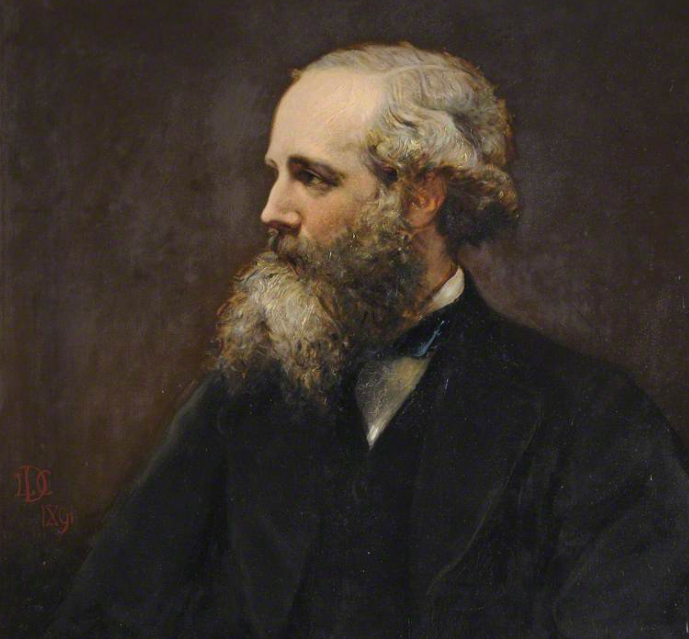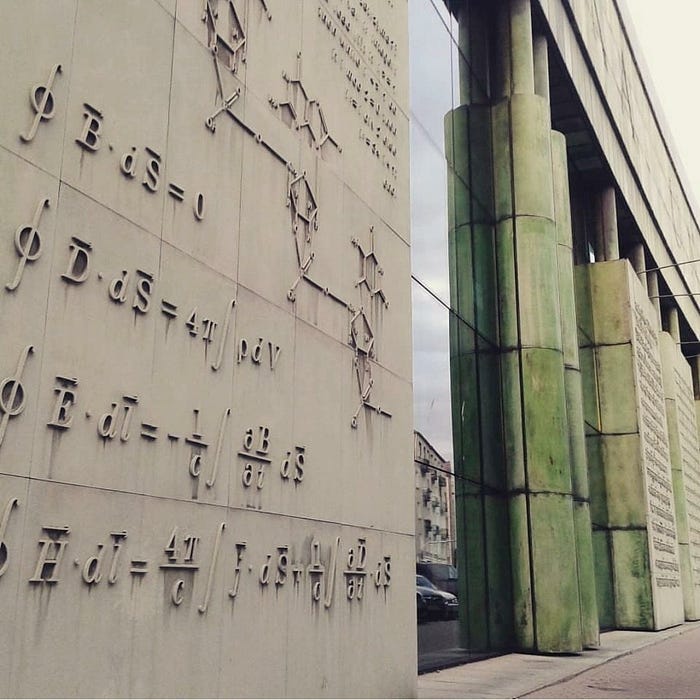https://www.cantorsparadise.com/maxwells-influence-on-our-understanding-of-physical-reality-9b92c01631b6
“From a long view of the history of mankind, seen from, say, ten thousand years from now, there can be little doubt that the most significant event of the 19th century will be judged as Maxwell’s discovery of the laws of electrodynamics. The American Civil War will pale into provincial insignificance in comparison with this important scientific event of the same decade.”
— Richard Feynman, volume II; lecture 1, “Electromagnetism”; section 1–6, “Electromagnetism in science and technology”; p. 1–11
Partial differential equations have played a great role in theoretical and mathematical physics. It all began in the nineteenth century with the formulation of the wave-theory of light which established itself under the pressure of observed and well-analyzed experimental results. Here, for the first time the partial differential equations appeared as a natural expression of primary realities of physics. The new era in the evolution of theoretical physics began with the names of Maxwell, Faraday and hertz. It wouldn’t be wrong to call Maxwell the ‘lion’ in this revolution of physics. The whole idea of what was then known about light and electromagnetic phenomena was expressed by Maxwell in his double system of differential equations. Maxwell showed that electric and magnetic fields were, in fact, dependent variables re-conceptualizing the preconceived notion about electric and magnetic fields.

Neglecting the important individual results which Maxwell’s life work produced in important departments of physics, and of the nature of physical reality, we may say this: before Maxwell people conceived of physical reality-in so far as it is supposed to represent events in nature- as material points, whose changes consist exclusively of motions, which are subject to total differential equations. After Maxwell they conceived physical reality as represented by continuous fields, not mechanically explicable, which are subject to partial differential equations. This change in the conception of reality is the most profound and fruitful one that has come to physic since Newton.
— A. Einstein on 100th anniversary of Maxwell’s birth. Published in 1931.
Confronted with Faraday’s experimental results, together with earlier other remarkable physicists like André–Marie Ampère, Maxwell puzzled about the mathematical form of the equations of electric and magnetic fields and brought in some changes in his equations with a remarkable stroke of insight. Maxwell’s theory today can be summed up by four equations. But his formulation took the form of 20 simultaneous equations, with 20 variables. The dimensional components of his equations (the x, y, and z directions) had to be spelled out separately. And he employed some counterintuitive variables.
- ∇.D = ρ
- 2)∇.B = 0
- 3)∇xE = -∂B/∂t
- 4)∇xH = J +∂D/∂t
Here, E and B and J are vector fields describing the electric field intensity, the magnetic flux density, and the electric current density respectively, ρ describes the density of electric charge, D is electric displacement, H represents magnetic field intensity and t is time.
- Maxwell’s first equation is
∇. D = ρ.
Integrating this over an arbitrary volume V we get
∫v ∇.D dV = ∫v ρ dV
But from Gauss Theorem, we get
∫s D.dS = ∫v ρ dV = q
Here, q is the net charge contained in volume V. S is the surface bounding volume V. Maxwell’s first equation signifies that: The total electric displacement through the surface enclosing a volume is equal to the total charge within the volume.
2. Maxwell’s second equation is
∇.B = 0
Integrating this over an arbitrary volume V, we get
∫v ∇.B = 0.
Using Gauss divergence theorem to change volume integral into surface integral, we get
∫s B.dS = 0.
Maxwell’s second equation signifies that: The total outward flux of magnetic induction B through any closed surface S is equal to zero.
3. Maxwell’s third equation is
∇ x E = — ∂B/∂t . dS
Converting the surface integral of left hand side into line integral by Stoke’s theorem, we get
Φc E. dI = — ∫s ∂B/∂t. dS.
Maxwell’s third equation signifies that: The electromotive force (e.m.f. e = ∫C E.dI) around a closed path is equal to negative rate of change of magnetic flux linked with the path (since magnetic flux Φ = ∫s B.dS).
4. Maxwell’s fourth equation is
∇ x H = J + ∂D/∂t
Taking surface integral over surface S bounded by curve C, we obtain
∫s ∇ x H. dS = ∫s (J + ∂D/∂t) dS
Using Stoke’s theorem to convert surface integral on L.H.S. of above equation into line integral, we get
Φc H.dI = ∫s (J + ∂D/∂t).dS
Maxwell’s fourth equation signifies that: The magneto motive force (m.m.f. = Φc H. dI) around a closed path is equal to the conduction current plus displacement current through any surface bounded by the path.
The general equations are next applied to the case of a magnetic disturbance propagated through a non-conductive field, and it is shown that the only disturbances which can be so propagated are those which are transverse to the direction of propagation, and that the velocity of propagation is the velocity v, found from experiments such as those of Weber, which expresses the number of electrostatic units of electricity which are contained in one electromagnetic unit. This velocity is so nearly that of light, that it seems we have strong reason to conclude that light itself (including radiant heat, and other radiations if any) is an electromagnetic disturbance in the form of waves propagated through the electromagnetic field according to electromagnetic laws.
— James Clerk Maxwell, A Dynamical Theory of the Electromagnetic Field (1864), Introduction, p. 466

Maxwell’s equations are very much similar to Hamilton’s equations in which they show what must be the rate of change, with time, of the relevant quantities in terms of what their values are at any given time — In Maxwell’s equations the quantities are electric and magnetic fields. But there is one major, and important, difference between the equations of Maxwell and those of Hamilton’s: Maxwell’s equations are field equations and Hamilton’s equations are particle equations which means that it requires infinite number of parameters to describe the state of the system in case of Maxwell’s proposition whereas for Hamiltonian’s, it requires finite number (the three point coordinates)
Maxwell’s equations of electromagnetism describe how both electric and magnetic fields arise from electric charge and currents, how they propagate and how they influence each other. These equations do not just hold the importance as to help in formulating and explaining multiple areas of theoretical and mathematical physics but they also, along with the Lorentz force, quantify most of the physical processes that we experience in our day-to-day lives.

Maxwell’s equations can be considered as one of the foundation pillars of quantum mechanics and modern physics as it beautifully explains the fact that light requires no medium for its propagation which was previously assumed to a luminous ether. In the 19th century, theoretical physicists realized that there were solutions to Maxwell’s equations in which electric and magnetic fields could exist together in the absence of electric charge. This solution was an oscillating, traveling wave, moving at 299792458 meters per second. Several experiments were conducted which later revealed that light itself moved at exactly the same speed. This was not a coincidence — they were the same thing. It was clear that light wasn’t really any magical entity and that we could create light through the manipulation of electric charges. This resulted in the creation of man-made light sources, such as radios (radio waves are a low energy form of light), lasers and synchrotrons. The mere idea that came out from Maxwell’s theory of electromagnetism- the fact that energy can be transported from place to place by electromagnetic waves — came out to be strikingly fascinating and extremely thought-provoking in the physics community.
